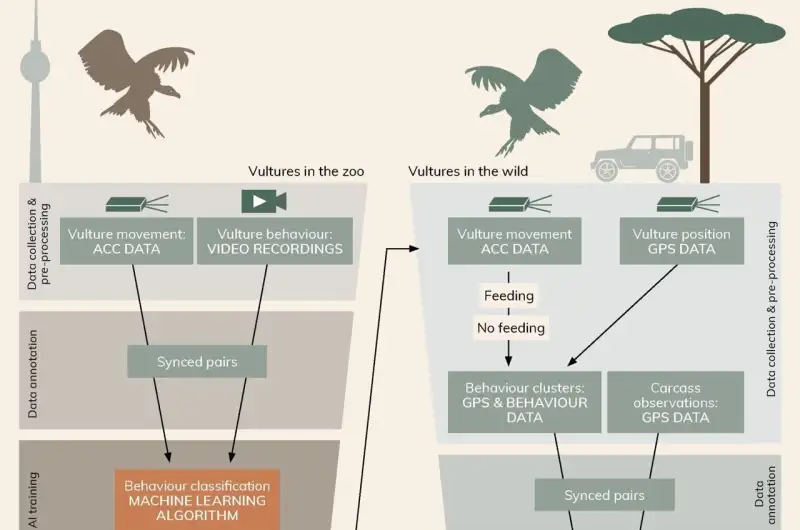In a groundbreaking initiative, the GAIA Initiative has developed an advanced AI algorithm that leverages animal tag data to monitor and analyze the behaviors of white-backed vultures.
This innovative approach integrates the natural scavenging instincts of vultures with cutting-edge artificial intelligence to detect carcasses across expansive landscapes, providing critical insights into wildlife mortality and environmental changes.Vultures as Natural SentinelsWhite-backed vultures (Gyps africanus) play a vital ecological role by scavenging carrion, preventing the spread of diseases, and maintaining ecosystem health.
Their ability to detect carcasses over vast areas is a result of millions of years of evolution, marked by exceptional vision and complex communication skills. These attributes make vultures indispensable for studying wildlife mortality, whether caused by natural processes, environmental toxins, or human activities.AI-Powered ConservationThe GAIA Initiative, a collaboration between leading research institutes, conservation organizations, and enterprises, aims to establish a high-tech early warning system for ecological changes.
Developed by the Leibniz Institute for Zoo and Wildlife Research (Leibniz-IZW) in partnership with Fraunhofer IIS and Tierpark Berlin, the AI algorithms classify vulture behaviors and identify carcass locations using data from GPS and acceleration (ACC) sensors.According to Dr. Jörg Melzheimer, GAIA project head, this “I³ approach” combines animal intelligence, human expertise, and artificial intelligence to harness the unique ecological knowledge of wildlife.How the System WorksData Collection: Animal tags equipped on vultures collect two types of data:GPS Data: Pinpoints the exact location of a vulture at specific times.ACC Data: Captures movement patterns across three spatial axes, creating unique “signatures” for different behaviors.Behavior Classification: Using reference data from tagged vultures in Namibia and Tierpark Berlin, the AI was trained to identify behaviors such as flying, feeding, gliding, and standing.
Over 15,000 data points were collected, enabling the AI to classify these behaviors with high accuracy.Carcass Detection: By analyzing spatial clustering of specific behaviors, the system identifies locations where vultures feed. Field scientists verified over 500 carcass sites and 1,300 non-carcass clusters, demonstrating the system’s reliability.
Transformative ApplicationsThe AI-powered system serves as an early warning tool for environmental monitoring. It can detect critical incidents like droughts, disease outbreaks, or illegal wildlife killings in real time, allowing conservationists to respond effectively.”This technology enables us to tap into the knowledge of vultures, using their natural behaviors as a bridge to better understand and protect ecosystems,” explains Dr. Ortwin Aschenborn, GAIA co-project head.The Future of ConservationBy merging natural instincts with AI, the GAIA Initiative is setting a new standard for wildlife research and conservation.
This innovative system not only enhances our ability to monitor ecosystems but also underscores the potential of interdisciplinary approaches in addressing global environmental challenges.

















+ There are no comments
Add yours